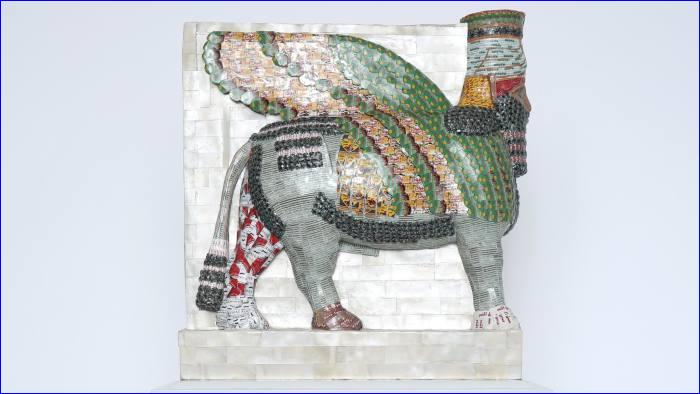


 James O Jenkins)
James O Jenkins)
Artists from the UK, Pakistan, Mexico, India and the US unveiled small-scale models of five proposals at an event in the National Gallery. Two of their ideas will be selected to appear on the plinth in 2018 and 2020.
Justine Simons, deputy mayor for culture at City Hall, which has run the initiative since 1999, said it was the most international group of artists ever to be considered for the plinth -- a deliberate tactic by the organisers to reflect "our ambition to attract brilliant creatives from around the world to London".
Heather Phillipson, the sole British artist under consideration, offered a sculpture of a blob of cream on the point of toppling over, decorated with a cherry, a housefly and a working surveillance drone through which internet users will gain a "drone's eye view" of one of London's best known public spaces.
"Cream is always in the state of collapsing under its own weight," she said. "I'm thinking of it as a moment of potential hubris, as something that's on the verge of collapse. It's definitely a response to the present political moment."
Michael Rakowitz, a US artist, came up with his idea when he found out that the fourth plinth was 14 feet long, the precise length of a winged bull from the gates of Nineveh -- a sculpture dating from 700BC which Isis fighters turned to rubble in February 2015. "It was a beautiful moment of serendipity," said Mr Rakowitz, who has dedicated himself over the past decade to creating modern reconstructions of some of the 8,000 ancient artefacts lost or stolen since the Iraq invasion.
Damián Ortega, a Mexico City-based artist, sprung a surprise on the organisers when he changed the name of his piece from Higher to High Way minutes before the start of the event. "I like the double meaning," he said, explaining that the vertiginous construction involving a truck, ladders, oil cans and a scaffold is used on Mexico's roads to change street light bulbs. "I like to investigate the intelligence of popular knowledge and ordinary engineering."
Raqs, a collective of three Indian artists, invokes the images of power used by the British Raj in their statue showing a regal costume minus the body inside. The artists drew their inspiration from the grand statues of viceroys, kings and governors once located in prime positions in New Delhi, which were removed after independence to the seclusion of Coronation Park. The work would be "a ghost of the past and a warning for the future", they said.
The Pakistan-born artist Huma Bhabha, whose art deals with themes of war and displacement, offered an abstract, untitled sculpture made of brown cork and white polystyrene and covered with apparently random marks, which she said "revealed concepts buried within the materials".
The five proposals will be on show at the National Gallery until March 26. The two winners, which will replace the current plinth sculpture David Shrigley's "Really Good", will be announced in March.

or register to post a comment.